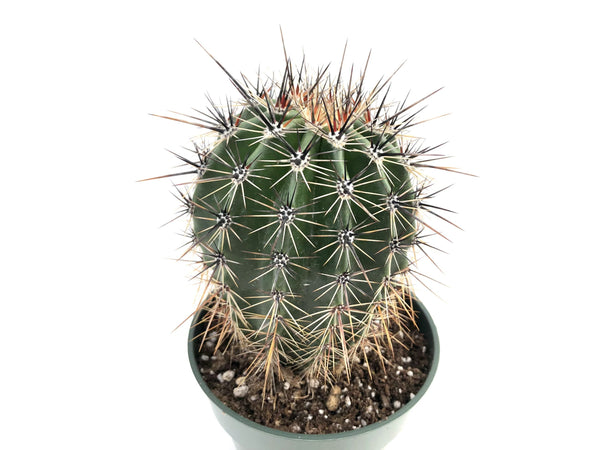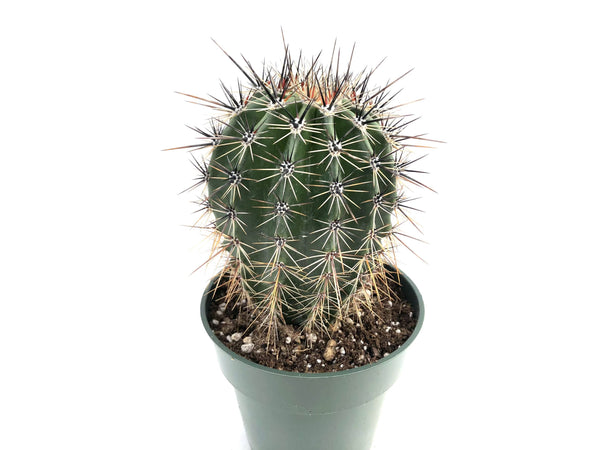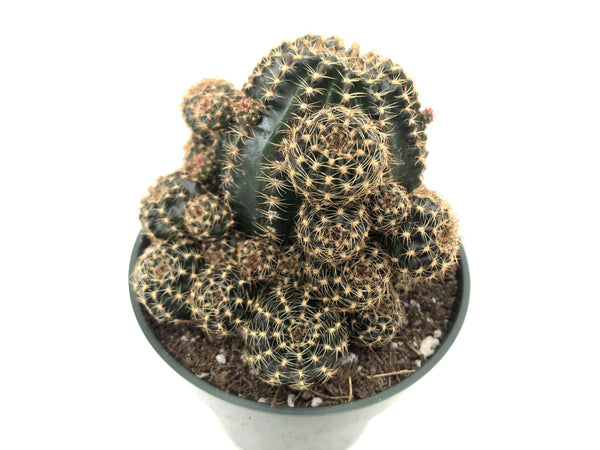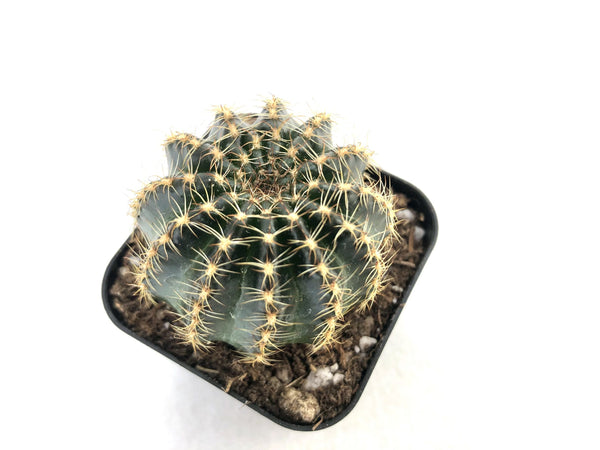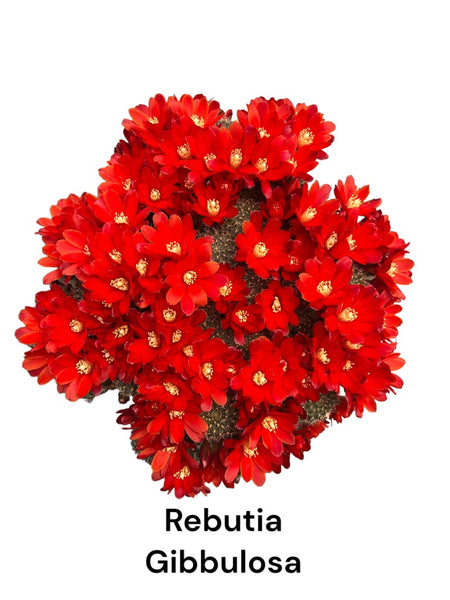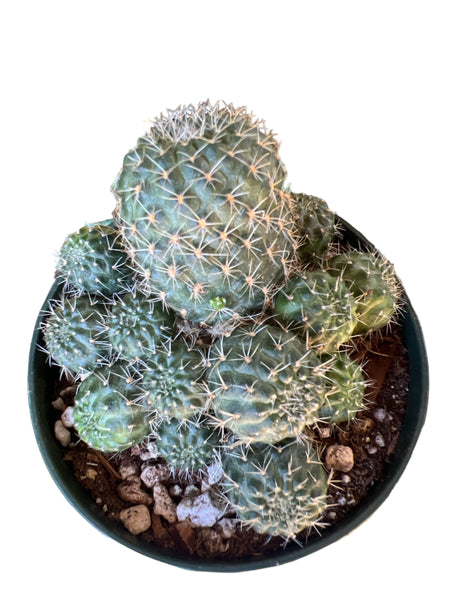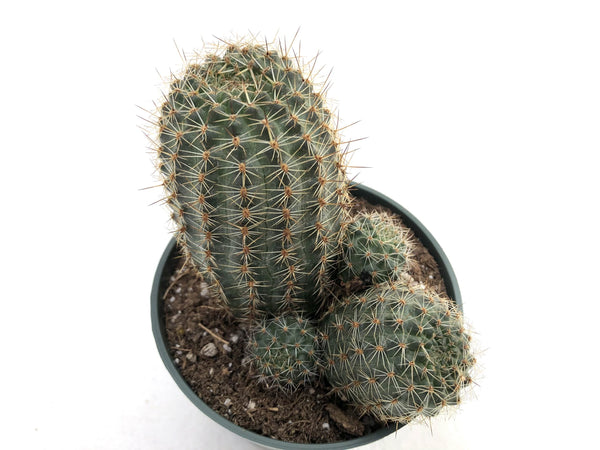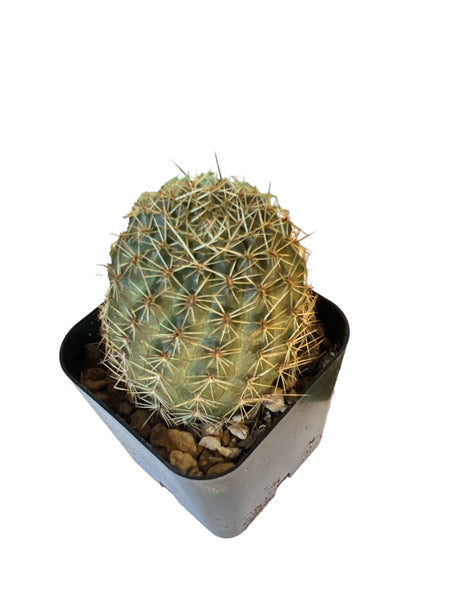Home Euphorbia meloformis (Melon Spurge)
Euphorbia meloformis (Melon Spurge)
$8.99
Euphorbia meloformis, the melon spurge, has a rounded shape, ribbed stem, and understated blooms drawing the eye and intriguing the mind. Adapted to thrive in harsh environments, yet easy to cultivate in the home, it offers both practical and aesthetic rewards. Whether grown for its sculptural form or as an emblem of the world’s arid wonders, melon spurge continues to inspire admiration and curiosity wherever it is found.
Botanical Description: Euphorbia meloformis earns its common name from the plump, rounded, melon-like appearance of its stem. Typically growing to a height of 10-15 centimeters and a diameter of 10-20 centimeters, the plant’s solitary stem is globular to slightly flattened and divided into 8 to 12 well-marked vertical ribs. These ribs are often decorated with small, conical tubercles, sometimes tipped with short spines or bristles—remnants of the plant’s evolutionary adaptation to ward off herbivores.
Leaves and Flowers: The plant’s real spectacle comes with its flowering. Euphorbia meloformis produces small, yellow-green cyathia—the unique, cup-like flower structures of the Euphorbia genus—from the upper parts of its stem. These cyathia appear singly or in small groups, and while not especially showy, they are fascinating up close, with the typical features of the genus: a cup containing the actual tiny flowers, surrounded by nectar glands. The blooming period usually occurs in late spring to early summer, and the flowers are often visited by pollinators attracted to their subtle color and nectar.
Distribution and Habitat: Euphorbia meloformis is native to the Eastern Cape Province of South Africa, where it thrives in rocky outcrops, exposed hillsides, and well-drained sandy soils. The climate of its native range has low rainfall, high temperatures, and intense sunlight, all conditions to which the plant is superbly adapted. In the wild, melon spurge often nestles among rocks or in the shade of other vegetation, where its camouflage and low profile help protect it from browsing animals







